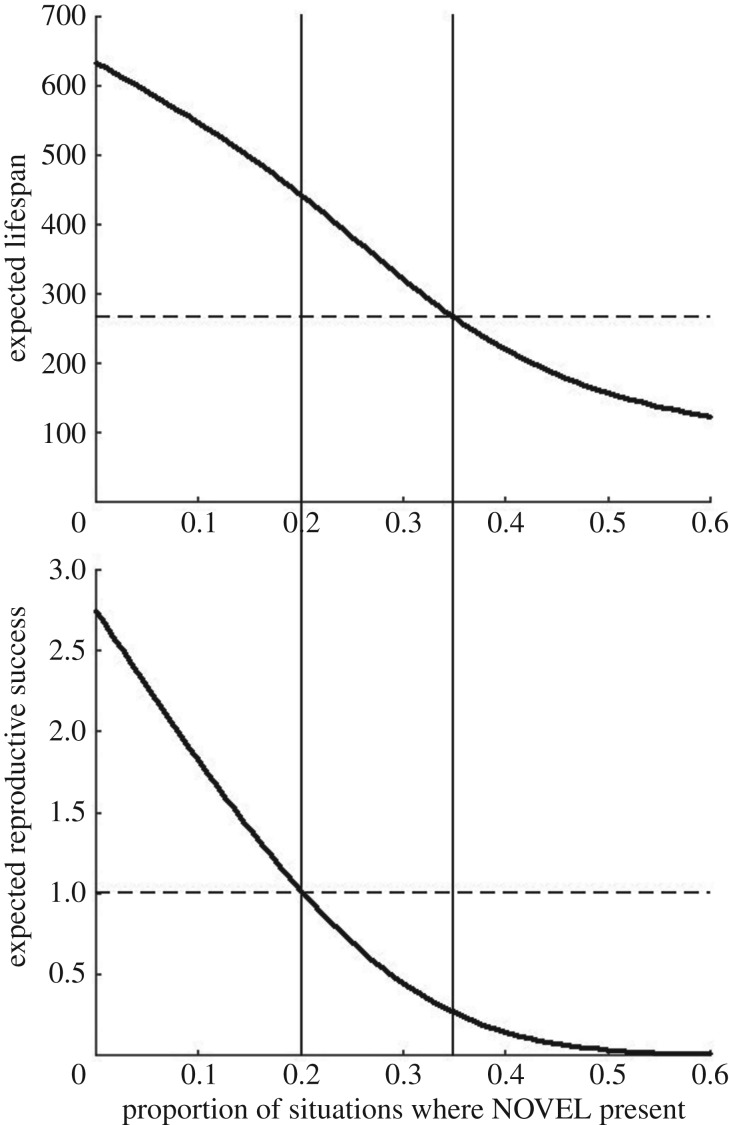Figure 4.
The effect of HIREC on expected lifespan and reproductive success, as a function of the proportion of safe situations where a novel animal is experienced, when HIREC kills half of the predators. The horizontal (dashed) lines show the pre-HIREC performance. When the SBADs are rarely present, focal individuals do better than before the HIREC change, due to half the predators being killed; when SBADs are common, they do worse. Between the vertical lines, HIREC increases expected lifespan but decreases lifetime reproduction. (Parameters: μS = 0, μD = 2, μN = 2, σ = 1, e = 1, m = 0, c = 6, pD = 0.1 initially, resulting in L = 10. Post-HIREC, dangerous situations have been halved, so pD becomes 0.05.)

